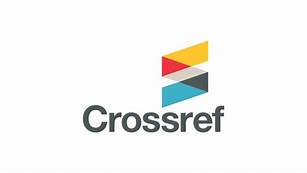Inclusion
Financial Inclusion as the Driver of Poverty Alleviation in Developing Economies: Evidence from Bangladesh
Mohammad Mohidul Islam
DOI: https://doi.org/10.58718/policyanalysis1120236
Key Words: Financial Inclusion, Poverty Alleviation, and Bangladesh.
Abstract
This study aims to investigate the role of inclusive financing practices on poverty eradication in the developing countries context like Bangladesh by utilising annual time series data over the period from 1995 to 2020. The empirical evidence from the study indicates that the macroeconomic influences of inclusive financing on reduction of poverty is not statistically well justified, meaning that no significant statistical relationship has been found between inclusive financing and poverty alleviation in Bangladesh over the study period. But the expected sign of the variables that possess in the specified model gives the remarkable indication regarding the presence of true economic relationship. However, the right direction of the variables related to financial inclusion show that to some extent there have been economic implications from which we could remark that poverty alleviation is positively associated with financial inclusion in Bangladesh similar to many other developing countries across the world.
References
1. Babajide, A. Abiola, Folasade B. Adegboye, and Alexander E. Omankhanlen. 2015. “Financial Inclusion and Economic Growth in Nigeria.” International Journal of Economics and Financial Issues. 5 (3): 629- 637. Bhatia, Shivangi., and Seema Singh. 2015. . “Financial Inclusion – A Path to Sustainable Growth.” International Journal of Science Technology & Management, 04 (01): 388- 397.
2. Chiad, Faycal, Aouissi, Amine, and Lahsasna, Ahcene. 2021. “Financial Market Inclusion and Economic Growth: Evidence from Algeria.” Empirical Economics Letters. 20 (10): 1773- 1812. Choudhury, Taufic Ahmed. 2014. “Financial Inclusion in Bangladesh: Background, Issues, Regulatory Measures and Challenges.” A paper prepared for the Bi- Annual Conference of Bangladesh Economic Association, November 22-22, 2014.
3. Cicchiello, F. Antonella, Amirreza Kazemikhasragh, Stefano Monferrá, and Alicia Girón. 2021. “Financial Inclusion and Development in the Least Developed Countries in Asia and Africa.” Journal of Innovation and Entrepreneurship. 10 (49).
4. Emara, Noha, and Ayah El Said, September, 2021. “Financial Inclusion and Economic Growth: The Role of Governance in Selected MENA Countries.” International Review of Economics & Finance. 75: 34- 54. Islam, Md. Ezzazul. 2016. “Financial Inclusion in Asia and the Pacific.” Discussion Paper, First High-Level Follow-up Dialogue on Financing for Development in Asia and the Pacific, Jakarta, Indonesia. April 29-30, 2015.
5. Islam, Md. Ezzazul, and Salim Al Mamun. 2011. “Financial Inclusion: The Role of Bangladesh Bank.” Working Paper Series: WP1101, Bangladesh Bank, December, 2011.
6. Khalily, M. A. Baqui. 2016. “Financial Inclusion, Financial Regulation, and Education in Bangladesh.” ADBI Working Paper Series No. 621, Asian Development Bank Institute, December, 2016.
7. Khalily, M. A. Baqui, and Md. Abdul Khaleque. 2013. “Access to Credit and Productivity of Enterprises in Bangladesh: Is there Causality?” Institute of Microfinance (InM), Working Paper No. 20, September, 2013.
8. Khayum, Hossain Mohammd Omar, and Noshin Tasneem. 2016. “Financial Inclusion in Bangladesh: Policy Recommendations for Modified Unit Banking System.” Concept Paper, Reprints. March 21, 2018.
9. Maisnam, Chinglen, 2017. ““Financial Inclusion for Inclusive Growth and Sustainable Development.” XVIII Annual International Conference Proceedings, 2017, 106-114.
10. Mugo, Matu, and Evelyne Kilonzo. 2017. “Community – Level Impacts of Financial Inclusion in Kenya with Particular Focus on Poverty Eradication and Employment Creation.” Central Bank of Kenya, May, 2017.





